How do snowflakes form, and why are they all unique?
A combination of humidity, temperature and the behavior of water molecules creates unique snowflakes. Because every snowflake follows a different path to the ground, exposing them to countless variations in temperature and humidity, every snowflake turns out different.
What makes some snowflakes so large?
How do snowflakes get so jumbo-sized? It's literally a sticky situation.
Snowflakes showcase the elegance of geometry in nature. They all look unique, all while having six sides.
How do snowflakes form?
According to NOAA, the birth of a snowflake begins when an extremely cold water droplet freezes onto a pollen or dust particle in the sky, creating a primary ice crystal.
WHAT A FLAKE! WHAT MAKES SOME SNOWFLAKES SO LARGE?
As this primary ice crystal falls to the ground, it grows along the way. Water vapor in the atmosphere freezes onto the primary crystal, building new crystals to form the snowflake’s six arms, NOAA said.
Why do snowflakes have six sides?
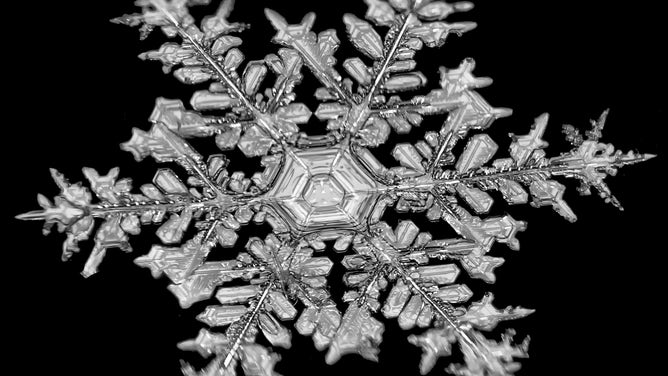
A closeup photograph of a snowflake taken in Aurora, Colorado.
(Jason Persoff / StormDoctor.com / FOX Weather)
No matter their design, all snowflakes have six arms or sides. According to the Met Office, this uniform shape is rooted in the basic shape of ice crystals on a molecular level.
Ice is made of water molecules, which are made of two hydrogen atoms and one oxygen atom, or H2O. When water freezes on the pollen or dust particle to form the primary crystal, its H2O molecules bond with each other and form a six-sided lattice structure.
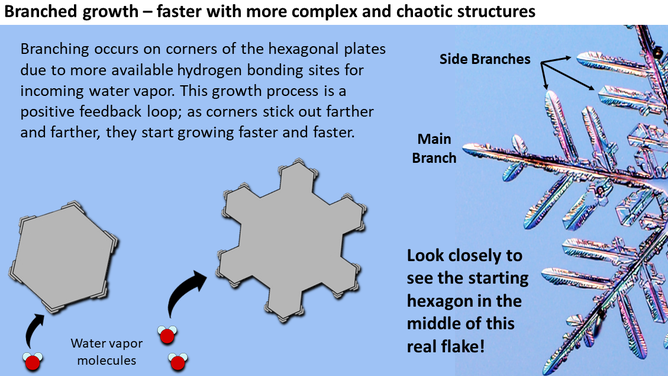
How the hexagonal shape of an ice crystal lays the foundation for six-sided snowflakes.
(Ken Libbrecht / National Weather Service / FOX Weather)
This hexagon forms the core of the primary crystal. In fact, these six points lay the foundation for the six branches of a snowflake.
The six points attract more water vapor than the rest of the hexagon. As the six points grow, they are able to catch more water vapor and grow faster than the rest of the snowflake in a positive feedback loop, according to the NWS.
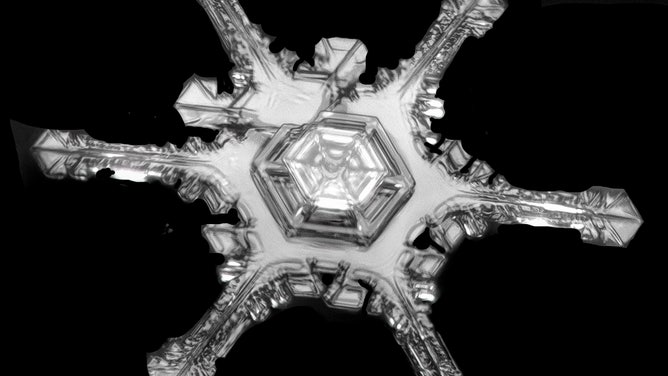
A closeup photograph of a snowflake taken in Aurora, Colorado.
(Jason Persoff / StormDoctor.com / FOX Weather)
As the six points grow longer, they eventually form the six branches of the snowflake.
A 12-SIDED SNOWFLAKE? COLORADO PHOTOGRAPHER CAPTURES UNUSUAL SNOWFLAKE FORMATION
Why are snowflakes unique?
While all snowflakes have six points and six sides, no two ever look the exact same. The reason for this involves the role of temperatures during a snowflake’s formation.
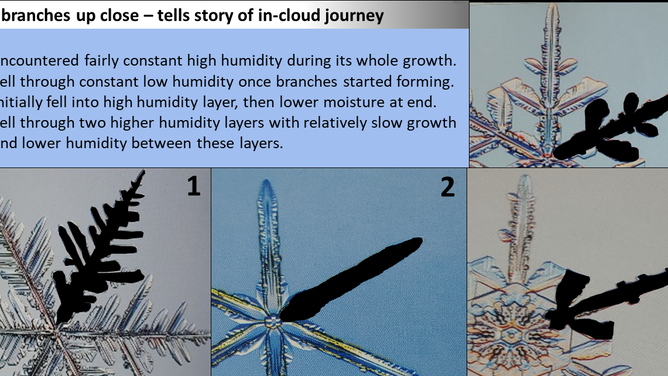
Different atmospheric conditions create different shapes
(Ken Libbrecht / National Weather Service / FOX Weather)
The ice crystals that form a snowflake are largely shaped by the temperature of a budding snowflake’s surroundings. According to NOAA, at 23 degrees Fahrenheit, crystals take on a long, needle-like shape. At 5 degrees Fahrenheit, crystals take on a shape that is flat and plate-like.
The temperature, along with humidity, also influences the shape of a snowflake’s arms.
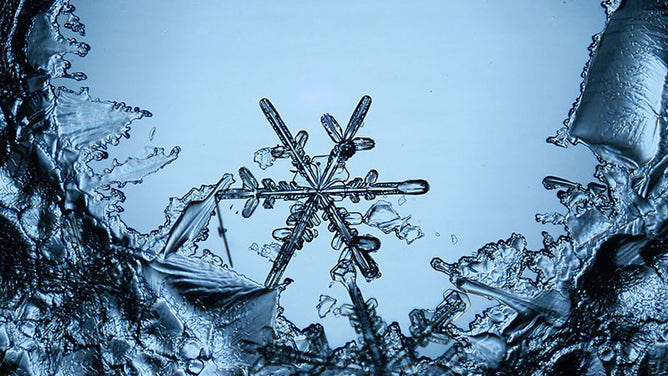
Ice crystals form to create a snowflake
(U.K. Met Office / FOX Weather)
As the primary ice crystal falls, it passes through different conditions of slightly varying temperatures and humidity. NOAA said these changing atmospheric conditions cause the growth patterns of a snowflake’s arms to change as the snowflake falls.
Because every snowflake follows a different path to the ground, exposing them to countless variations in temperature and humidity, every snowflake turns out unique.
